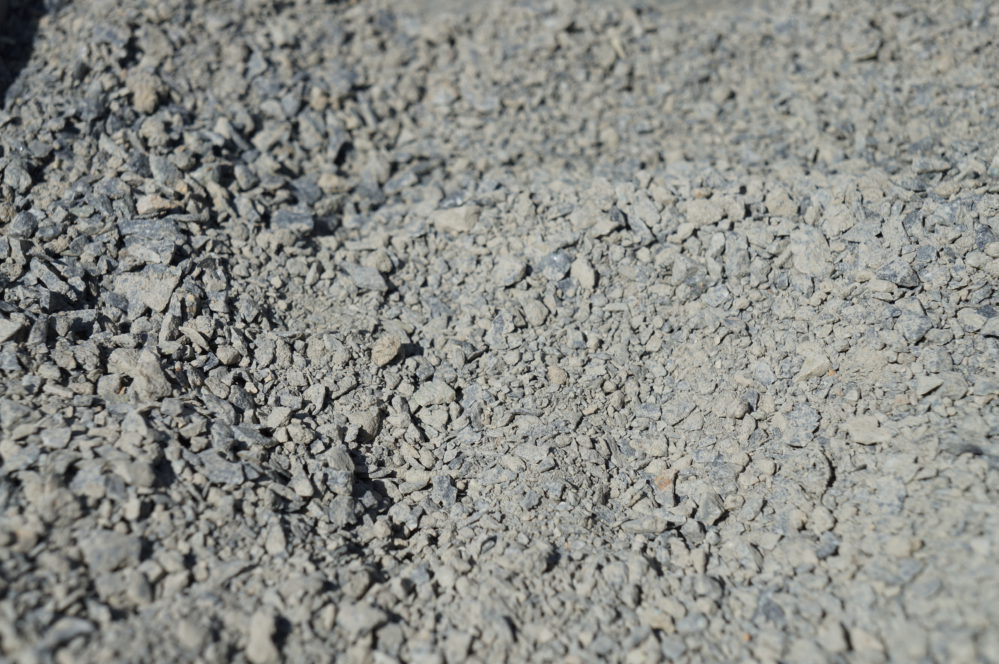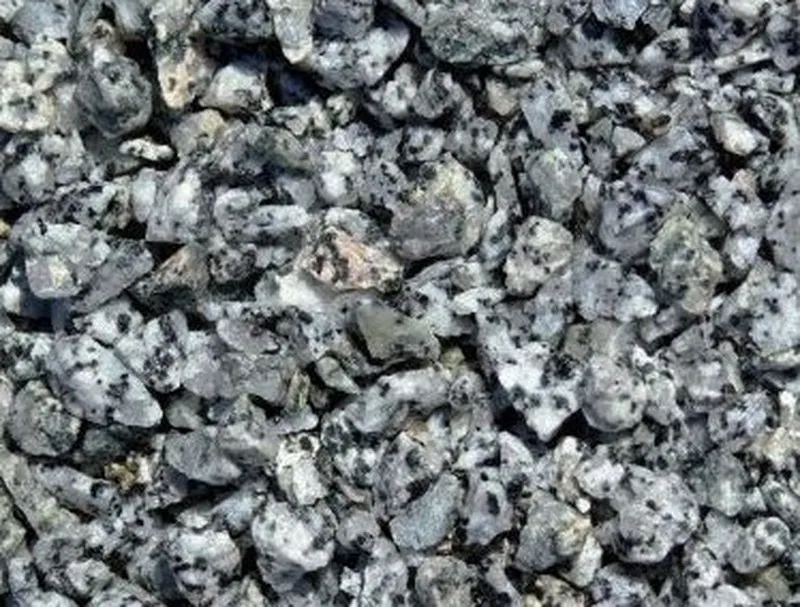How to Use Decomposed Granite for Sustainable Landscaping in 2026?
When people start reconsidering their backyards, they usually consider flowers, trees, and maybe a new lawn. However, in 2026, homeowners and builders are looking at materials that do not just look good today; they last, save water, and unify the whole area with minimal maintenance. One such material is "decomposed granite".
This plain, natural product has existed forever, but recently it's catching on as people desire sustainable landscapes to suit California's weather. Western Materials has observed homeowners and urban planners who plan how to design their sidewalks using DG (also known as decomposed granite, as the experts call it). It is inexpensive, easy to handle, and with the addition of accent landscaping rocks, you can create designs with a modern feel without losing the down-to-earth touch.
Now, we can get down to the specifics of the way DG operates, where it can be applied, and why it is becoming one of the most reliable materials to use in Southern California outdoor work.

What Exactly Is Decomposed Granite?
Consider granite, the hard stone you find on countertops. Centuries go by as nature chips away at that stone and breaks it down into finer, smaller pieces. That's decomposed granite. It's sort of in between sand and gravel. It falls into that in-between space, gritty and hard and natural in color.
Because it comes in different colors (warm golds, soft browns, even darker shades), DG blends easily with almost any outdoor design. It feels natural without trying too hard. And unlike plain dirt, it compacts tightly, which makes it way more durable for surfaces you’ll walk or drive on.
Why Choose DG for Sustainable Landscaping?
Low Water Use
One of the most significant reasons DG is so trendy now: saving water. Regular lawns are water hogs. DG isn't. Use it on high-traffic paths or as a groundcover around planting beds, and you immediately reduce watering requirements.
Long Lifespan
With proper compaction, DG stays put. It resists erosion, doesn't get washed away so easily, and can be maintained for years with only occasional touch-ups. That equates to fewer replacements and less landfill waste.
Blends with Natural Features
In contrast to plain gravel or concrete, DG doesn't shout "man-made." It blends into the scenery, allowing plants, trees, and decorative landscaping rocks to be the focus. That equilibrium creates your outdoor environment to appear planned rather than improvised.
Recyclable and Local
A majority of DG is manufactured locally, particularly here in California. That reduces transportation expense and decreases the project's environmental impact.
Innovative Uses of Decomposed Granite
- Pathways and Walkways
DG is a natural choice for walking spaces. Pack it down and you get a stiff but slightly yielding surface that's more kind to joints than concrete. It's beautiful meandering through gardens or leading to patios. - Driveways
Yes, you can install DG in driveways. You'll be adding stabilizers in for long-term durability, but when it's hardened, it takes vehicle traffic without the heat gain you get with asphalt. - Patios and Outdoor Seating Areas
For patios, DG provides a relaxed, earthy feel. With stone borders or wood pieces, it feels welcoming without being too much upkeep. - By Plants and Trees
DG can also be used as a mulch alternative. Apply it around shrubs or trees, and it retains soil moisture and suppresses weeds. Added bonus: it will not blow away like wood chips. - Play Areas
Families install DG in areas such as bocce ball courts or even play areas for kids. It's rigid but not hard enough to cause rough falls.

Using DG and Decorative Rocks
By itself, DG has an earthy, subtle look. But if you introduce decorative landscaping rocks, the design options become manifold. Big rocks can ground the area, small stones can border the DG pathways, and the color contrast gives everything the pop.
For instance:
- A golden DG path lined with slate-gray rocks provides immediate contrast.
- White decorative stones and darker DG bring light to dark places.
- Large boulders placed in a DG base provide definition and stop erosion on slopes.
It's that combination of the delicate texture of DG with the strong presence of rocks that provides balance. Your yard doesn't just appear neat; it feels right for the landscape.
Tips for Installing DG the Right Way
Prepare the Base
Clear the site of weeds, roots, and debris. Install landscape fabric if drainage is an issue.
Spread in Layers
Don't dump it all at once. Spread DG in two-inch layers, compacting as you go. That's what keeps it solid.
Moisture Matters
Light water spray while compacting will help particles bond together. Wet, not waterlogged.
Border It
Utilize rocks, wood, or metal bordering to contain DG. Without a border, it spreads over time.
Seal for Extra Strength
For driveways or heavily used areas, apply a stabilizer or sealer. Keeps dust under control and lengthens the life.
Maintenance: Easier Than You Think
They love DG because it requires so little. You may have ruts or low spots after a while. Just layer on a thin layer, spray down, and compact. That's all.
It's different from cracked concrete or gravel that moves too much. It just requires occasional touch-ups every now and then. If you have decorative landscaping rocks around, they will even hold everything in place, making less frequent repairs necessary.
Western Materials and Sustainable Choices
Western Materials has been serving Southern California for decades. We’ve seen how tastes and needs have shifted, especially in landscaping. More people want outdoor spaces that don’t waste water, that look good year-round, and that don’t cost a fortune to maintain.
That's where decomposed granite enters the picture. We sell DG in bulk to homeowners, landscapers, and contractors, ensuring you receive the appropriate grade and quantity for your project. Whether it's a backyard sidewalk or a large commercial construction project, we've got the material and the people to assist you in getting it done.
And when your landscape requires even more, our extensive selection of decorative landscaping rocks goes hand in hand with DG. From diminutive river rocks to large boulders, Western Materials has everything you need to enhance your landscape design without sacrificing that natural, earthy vibe.
Ready to Transform Your Outdoor Space?
If you're designing a landscaping job this year, begin with the proper foundation. Western Materials supplies bulk quantities of decomposed granite, decorative landscaping rocks, and other aggregates, all directly to your work site. Our staff will assist you in determining how much you'll require, walk you through the varieties, and ensure that your materials are delivered on time.
Call Western Materials today or go to Western Materials’ website to find out more. Let's transform your outdoor area into something beautiful and sustainable.
Frequently Asked Questions
1. Why is decomposed granite superior to regular gravel?
DG packs down solid, appears more natural, and leaves a smoother surface to walk on. Gravel has a tendency to move around more and doesn't absorb into landscaping as well.
2. Is decomposed granite able to withstand heavy rain?
Yes, if properly installed with borders and compacting. A stabilizer can be added for areas of poor drainage.
3. Does Western Materials sell decorative rocks as well?
Yes. We sell decomposed granite and decorative landscaping rocks throughout Southern California, with bulk delivery options.
4. How do I determine how much DG to order?
Our experts can assist you in calculating the volume according to your project's length, width, and depth so that you don't end up under- or over-ordering.



.png)
.png)
.png)
.png)

.png)
.png)


